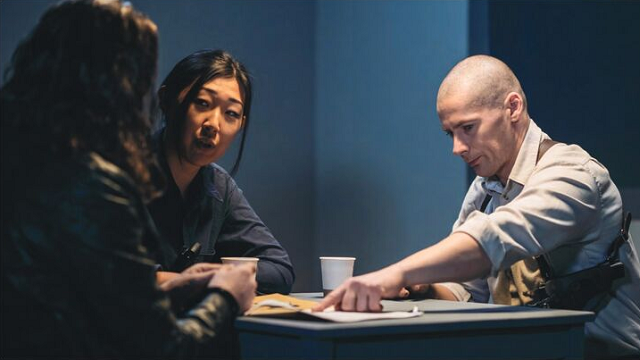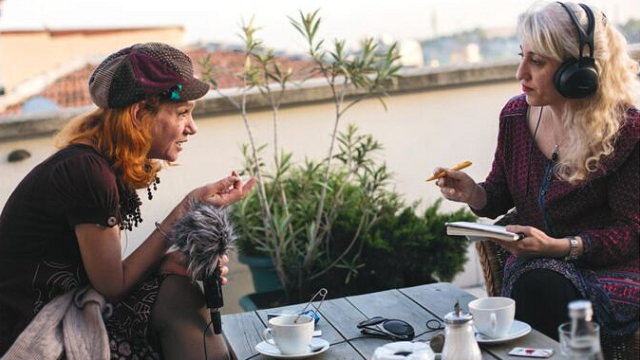-
QUALIFICATIONS
- For Linguists Worldwide
- For UK Public Services
- Preparation
- Policies & Regulation
-
MEMBERSHIP
- Join CIOL
- Membership grades
- NEW for Language Lovers
- Chartered Linguist
- Already a member?
- Professional conduct
- Business & Corporate Partners
-
ASSESSMENTS
- For Second Language Speakers
- English as a Second Language
-
EVENTS & TRAINING
- CPD, Webinars & Training
- CIOL Conference Season 2025
- Events & Networks
- CIOL Mentoring
-
NEWS & VOICES
- News & Voices
- CIOL eNews
- CIOL Awards
- The Linguist
- Jobs & Ads
-
RESOURCES
- For Translators & Interpreters
- For Universities & Students
- Standards & Norms
- CIOL & AI
- All Party Parliamentary Group
- In the UK
- UK Public Services
- Find-a-Linguist
Why words matter
Alicja Tokarska outlines her approach to using inclusive language in the target text, and bringing clients on board
Although most linguists have heard the term ‘inclusive language’, it is possible that only some use this way of writing in their daily work. At the beginning it may seem overwhelming and difficult, but incorporating inclusive language into translation practice is not impossible. I’d even say that, with enough practice and training, it’s easy. Using inclusive language means opting not to use certain expressions or words that some groups might see as hurtful or exclusionary. Although this refers to many areas, such as a person’s sexuality, race, religion and disability status, the subject that seems to be most widely discussed is gender.

For different languages, the gender aspect will differ. For instance, in English, gender-inclusive language means replacing gendered expressions (‘mankind’, ‘actress’, ‘stewardess’) with their non-gender specific counterparts (‘humankind’, ‘actor’, ‘flight attendant’). Polish, my native tongue and the language I translate into most often, needs an opposite approach.
The language is gendered like many others, including French, Arabic and Ukrainian. In Polish, it is not just nouns and adjectives that need to agree gender-wise; some verbs have different endings too. The verb robić (‘to do’), for example, is not too problematic in the present tense, but its past tenses have a different ending for each grammatical person and gender, so ‘I was doing my homework’ changes depending on the speaker’s gender.
The biggest issues in Polish, and in many other gendered languages, are the general masculine form, grammatical agreements and past tenses. I have developed six techniques that I use in my work, which all serve different purposes and fit different specialisations and types of clients:
1 Splitting. Rather than using the general masculine form (e.g. lingwiści; ‘linguists’), opt for both the masculine and the feminine form (lingwiści i lingwistki).
2 Osobatywy. Translating roughly as ‘person forms’, this is similar to person-first language but can be used with any noun. The masculine word studenci (‘students’) can be expressed as osoby studenckie (‘studying people’, or ‘study people’ to be more exact).
3 Non-gendered collective nouns. Examples include personel or kadra (‘staff’) and zespół (‘team’). Instead of translating ‘doctors and nurses’ in the common way (lekarze i pielęgniarki), with ‘doctors’ being masculine and ‘nurses’ feminine, personel medyczny (‘healthcare staff’) can be used.
4 Change the subject. Avoid using the gendered form of the subject in a sentence by restructuring the sentence. Wzruszyłaś się? (‘Did you get (emotionally) moved?’) can be changed to Wzruszyło Cię to? (‘Did it (emotionally) move you?’).
5 Change the tense. Re-write a past-tense sentence in the (masculine) second person singular in the non-gender specific present tense. Try using Seans naszego serialu masz już zaliczony? (‘Do you already have watching our show under your belt?’) instead of Widziałeś już nasz serial? (‘Have you already seen our show?’)
6 Inclusive typography. Use the so-called ‘floor’ ( _ ) to acknowledge space for gendered forms that aren’t masculine or feminine. This is a way to include non-binary people. A gender-inclusive noun ‘translators’ (tłumacze in general masculine form) becomes tłumaczki_e. Note that this is just one form of inclusive typography.
Applying strategies
Apart from the last strategy, which is much more modern, all of these techniques fit nicely in any type of text, although the extent of use might differ. Splitting can be very repetitive and shouldn’t be used in every sentence: not only would it make the text extremely long (which is often an issue when producing marketing copy or subtitles), but it also wouldn’t look very appealing stylistically. I believe that alternating splitting with general masculine forms shows readers that the aim is to make women more visible.
There are other ways to avoid general masculine forms without being repetitive. When working on a text listing many groups of people, such as an article about a climate change protest attended by people of all genders, it would not be ideal to use only splitting or only the general masculine form. I prefer to interchange masculine and feminine forms, being sure to use feminine forms with nouns that are commonly associated with men and vice versa in order to break stereotypes. ‘Doctors, nurses, business owners and teachers’ then becomes Lekarki, pielęgniarze, przedsiębiorczynie i nauczyciele, with feminine forms for the first and third nouns.
Although I don’t specialise in legal texts, I understand that using gender-inclusive language might seem hard for lawyer linguists. Splitting might not be the best option here, but I believe that a lot of legal terminology lends itself nicely to my second solution: osobatywy.
The example osoby studenckie might not sound like a very natural expression, but it is possible to create such phrases in a more traditional way for the Polish language. If we don’t know someone’s gender, rather than saying oskarżony (‘the accused’ masc.), składający petycję (‘he who submitted the petition’) and sygnatariusz (‘the signatory’ masc.), we could use osoba oskarżona, osoba składająca petycję and osoba podpisująca dokument. Yes, these are longer, but they won’t be used in every sentence, so it might be worth considering them for the sake of greater inclusivity.
Osobatywy (‘person forms’) are also a good way to include non-binary people who don’t use the traditional gendered pronouns (‘he/him’ and ‘she/her’) but opt for other forms (such as onu/ono/onu and jenu/jejgo/jegie in Polish). I often try to use this solution together with splitting, using non-gendered collective nouns and changing the subject or grammatical tense of the sentence. This way the text stays interesting and flows well.
When it comes to modern inclusive typography, it is always best to speak to the client and see if they’d be happy for you to use it. In my experience, this solution has proven most controversial and I’ve only been able to include it in my translation twice: for a client that specifically asked for a gender-inclusive copy for their clothing marketing campaign, and for an advertising agency that needed job adverts translated into Polish and was happy to take an inclusive approach.
Questioning biases
Sometimes clients might not even realise that the source text includes stereotypes. Examples? A dating app that seems to be aimed only at straight people, a survey that only includes two gender options, and a marketing brochure with visuals showing only white and non-disabled people.
Even if the source text cannot be changed, it is always helpful to comment on these things so the client can consider their approach in future. You do run the risk that they won’t take your notes on board, or that they will see them as petty or judgemental, but is that really a client worth keeping? I only like to work with people and businesses who care about inclusivity and are happy to hear translators’ opinions on such matters.
I have also seen the opposite, where the source text is written in an inclusive way or with a neutral approach but the translation introduces stereotypes or mistranslations. For instance, I recently revised a publication about the HPV vaccination. The authors took great care to make sure it was aimed at people with uteruses (note that this is biologically correct: not all cisgender women have a uterus while some transgender men and non-binary people do). The translator missed this, and when the text was explicitly talking about trans people, they used inappropriate vocabulary (transseksualni mężczyźni rather than trans mężczyźni or transpłciowi mężczyźni).
Similarly, when revising a baby accessories text I came across ‘baby’s first year album’ translated as album młodej mamy (‘new mum’s album’). This is very stereotypical, suggesting that it is just women who take care of children.
In order to use inclusive language effectively, we need to know why we are incorporating it into our writing. My aim is simple: to not alienate anyone, and to make everyone feel included and respected.
Since our translations will be passed on to clients and revisers, it is always helpful to include a comment explaining why you have opted for specific inclusive solutions. I’ve noticed that the more I do that, the more common it is for these translations to be kept in the final document. In short: don’t be afraid to engage in a conversation with clients, tell them you’re aiming to translate the text in an inclusive way, and get used to questioning your own biases every time you sit down to work.
Alicja Tokarska MCIL CL is a freelance translator based in Glasgow. She translates from English, Spanish and French into Polish, and from Polish into English. She’s passionate about inclusive communication and works mainly in the areas of fashion and textiles, audiovisual translation and sustainability.
Email: alicja@polkadottranslations.com
Twitter: @PolkaDotScot
More
The Chartered Institute of Linguists (CIOL), Incorporated by Royal Charter, Registered in England and Wales Number RC 000808 and the IoL Educational Trust (IoLET), trading as CIOL Qualifications, Company limited by Guarantee, Registered in England and Wales Number 04297497 and Registered Charity Number 1090263. CIOL is a not-for-profit organisation.








